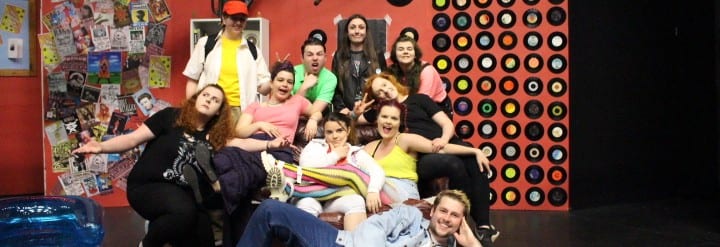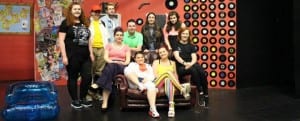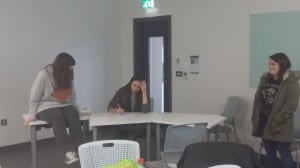Going into the final performance of our show, I was a little nervous about how it would be received. Because comedy is a genre that is highly dependent on audience response, it was impossible to know whether the show would be a success before the actual performance, since things that made us laugh during rehearsals and the development of the script wouldn’t necessarily amuse an audience who weren’t privy to that process before watching the end product. As with any show, during the development process, the company acquired various “in-jokes” amongst ourselves that inevitably subtly alter performances during the show and can sometimes totally change how an audience will receive it.
Thankfully, the audience responded very positively to the show, laughing and reacting in certain instances where none of us had anticipated receiving any reaction. One instance of this came when I entered with my line “It’s called culture! You’d understand it if you tried!” (Briggs, 2017) while wearing my “final stage” costume (Fig. 1), which during rehearsals hadn’t seemed to be a particularly funny moment but which had much of the audience laughing.
As an actor, it was immensely gratifying to feel such a positive energy and response from the audience during the performance, particularly since I’m not really used to playing such a comedic role. However, it was certainly an exciting challenge and one which I feel I managed to achieve successfully. One of the biggest challenges was simply adapting to the size of the stage on which we were performing, since having spent the process rehearsing in smaller spaces, I had become used to “performing softly”, despite the nature of the show being very farcical. However, during the rehearsals on the day, I found I was quickly able to adapt my style to suit the larger space.
Overall, developing this show and the character of Alex has been a long and occasionally tough process, but through plenty of collaboration between the writing team, the director and the other actors – as well as the company becoming very close-knit in general – I feel as though I was successful in overcoming the challenges that I was initially confronted with and was able to develop and create a real and grounded, if somewhat stylised and over-the-top, character.
Works Cited
Briggs, J. (2017) Record ’97. Lincoln.
Noble, R. (2017) Record ’97. [image] Lincoln Performing Arts Centre: Kick A Pigeon Theatre Company



